Turning wine into bread is easy and delicious with a Cranberry Cinnamon Swirl Bread (aka babka). Made with wine-soaked cranberries, a cranberry wine reduction, and a crunchy brown sugar cinnamon topping, it's sweet-tart goodness!
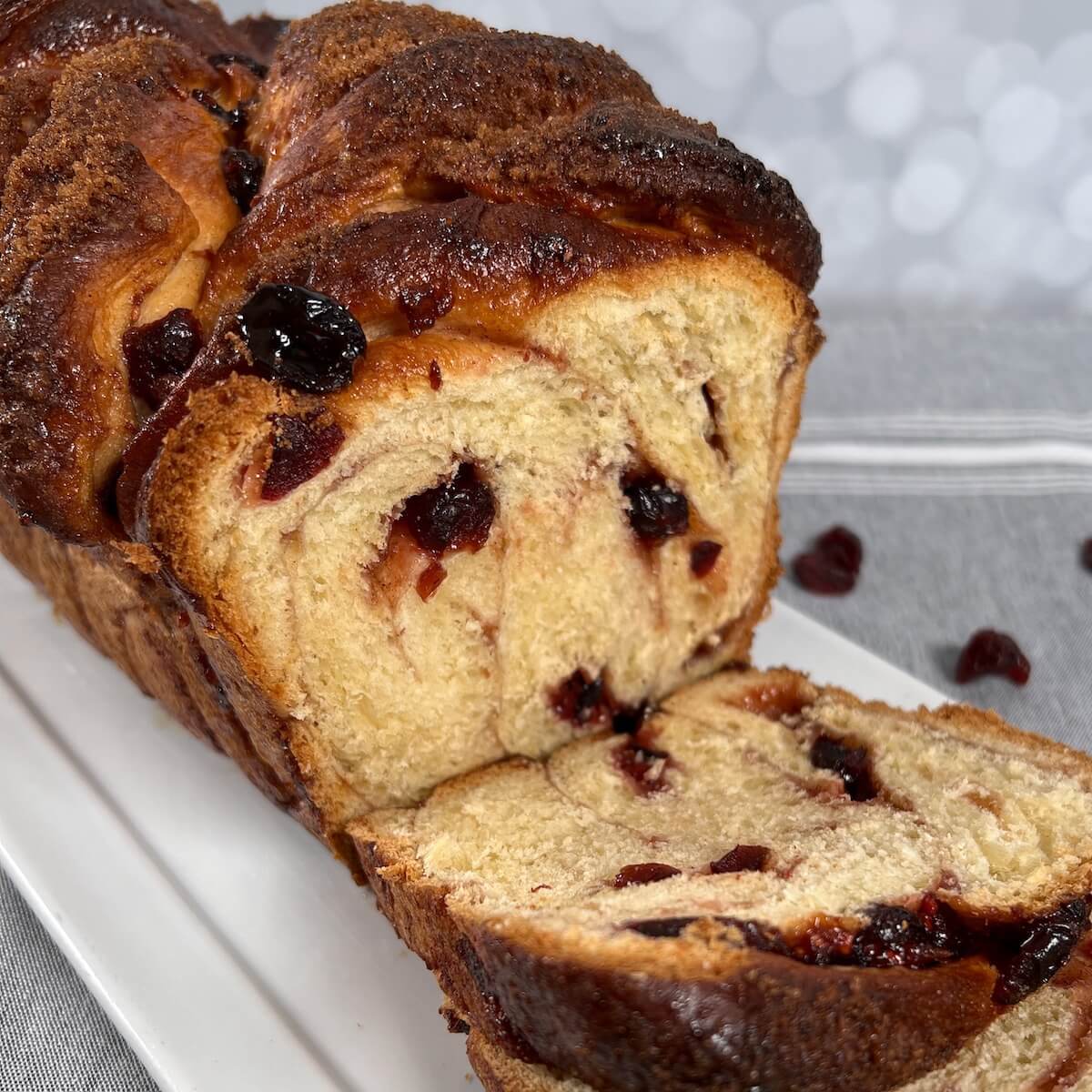
Jump to:
[September, 2023: I've reworked the recipe and updated this post with all new pictures. Enjoy!]
Why this recipe works
- Using cranberry wine two ways, soaking dried cranberries and reducing to a syrup, imparts double the sweet, tart cranberry flavor
- Cinnamon brown sugar adds a nice crunch and spice to counter the cranberries
- The bread dough is an updated tried-and-true challah dough
[Note: This post is sponsored by Plymouth Bay Winery.]
When you get wine as a gift, do you drink it?
I suspect that the vast majority do just that. However, if you’re a baker, maybe, just maybe, you think like I do and start dreaming up ways to bake with it, especially if it’s a semi-sweet fruit wine. After all, there’s concentrated flavor there…
When I received a bottle of Cranberry Bay Wine, I started wondering what I could bake with it. Here's how my thinking went: what if I reduced the cranberry wine to a syrup and spread it on babka dough for the filling? Wait, what if I soaked dried cranberries in the wine first, and sprinkled them on the filling as well? And also add brown sugar and cinnamon to the mix?!
What have you got? Cranberry Cinnamon Swirl Bread (aka Cranberry Cinnamon Babka)!
Cranberry cinnamon swirl bread has a sweet and eggy bread base, just like challah. The cinnamon brown sugar adds crunch and spice, but it's the sweet tartness from the cranberries with a hint of wine that steals the show. The wine reduction adds a deep flavor of tart cranberries and dark cherries, sticky and rich.
You can serve it for breakfast, brunch, afternoon tea, or after dinner. It's wonderful warmed, or try it toasted and spread with Brown Sugar Cinnamon Butter. Yum!
Whether you call this cranberry babka, craisin bread, cinnamon swirl bread with cranberries, or any other combination, this is a fun way to serve wine as bread and a fun exercise in creativity.
Oh, and it's yummy, too!
Recipe Ingredients
A cranberry cinnamon swirl bread recipe is just an egg-enriched bread dough that's filled with cranberry wine-soaked dried cranberries, cinnamon-spiked brown sugar, then rolled up just like a babka. In fact, I use the terms swirl bread and babka interchangeably here.
You'll need the following ingredients to make this recipe:

Ingredient Notes
Cranberry wine: When reduced to a syrup, the wine loses much of its alcohol content and concentrates into a lovely sweet-tart cranberry syrup.
Dried cranberries: Sweetened dried cranberries (aka Craisins) are amazing to eat out of hand, and add their sweet-tart flavor to baked goods especially when they're re-hydrated.
Raspberry jam: Offsetting the cranberry tartness, raspberry jam lends its sweetness to the swirl bread.
Brown sugar & cinnamon: I love the idea of cinnamon-spiked brown sugar to sprinkle on the filling and on top of the loaf, adding a bit of crunch and spicy notes.
You can vary your filling ingredients to your liking (I have some suggestions below).
Yeast: I use instant yeast when I bake bread, but Active Dry yeast is also available. See the FAQs for a discussion of the differences between them.
See recipe card for a full list of ingredients and measurements.
Vary your babka filling flavors
While I use cranberry wine, dried cranberries, and raspberry jam in this swirl bread recipe, feel free to substitute your favorite semi-sweet fruit wine or fruit juice with a complementary dried fruit and jam instead. Here are some suggestions:
- Orange juice, dried apricots, and apricot jam
- Blueberry wine, dried blueberries, and blueberry jam
- Apple cider, dried apples, apple butter
How to make cranberry cinnamon swirl bread
Step 1: Soak the cranberries
Place the wine in a medium microwave-safe bowl and heat for 1 minute on High. Add in the dried cranberries and soak in the warmed wine for at least an hour. When you're ready, strain the wine into a small saucepan, and set the cranberries aside (photo 1).
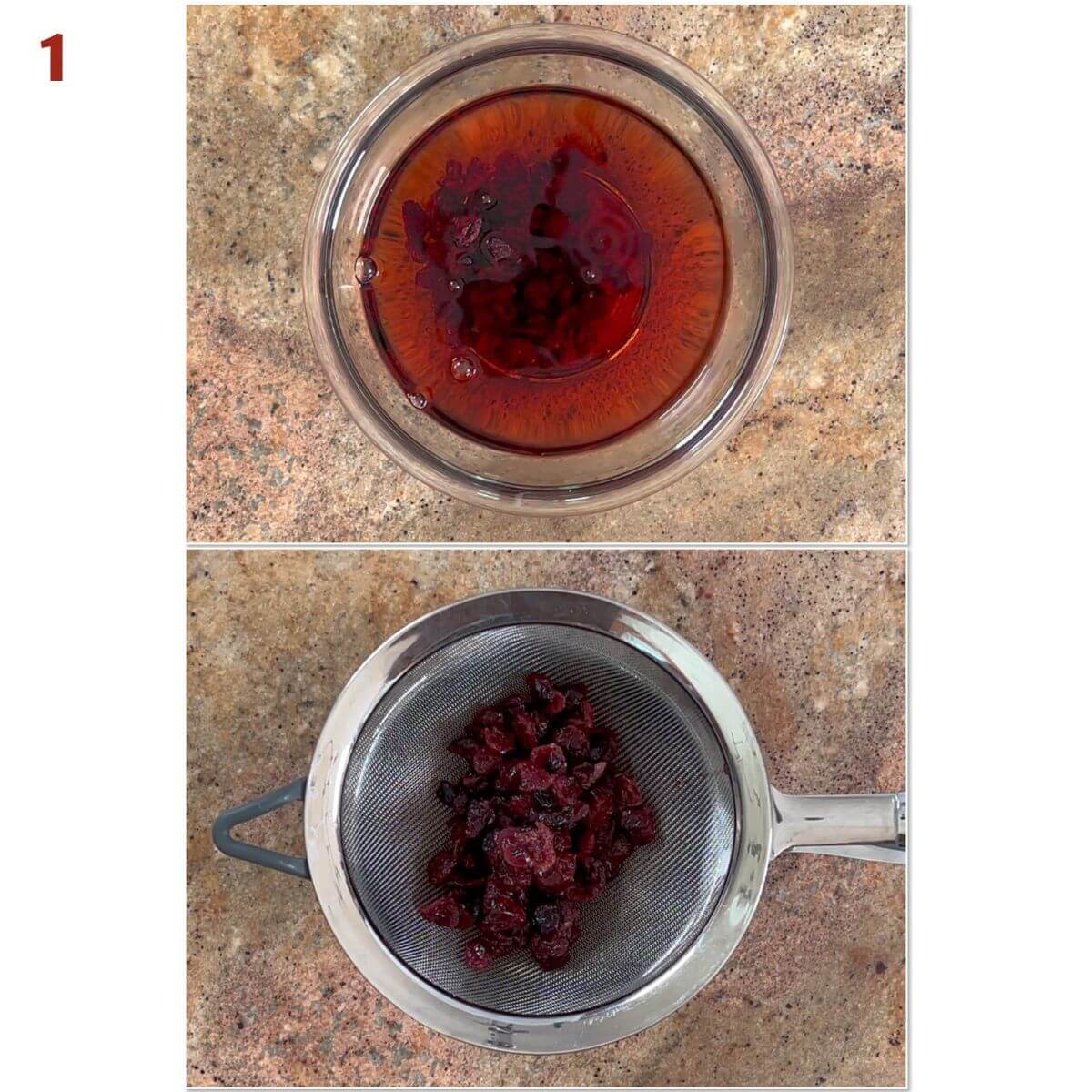
Step 2: Proof the yeast (optional)
Soaking the yeast in milk with a bit of sugar is done to "prove" the yeast is active (aka proofing the yeast). It's demonstrated here.
Heat the milk in the microwave for 30 to 60 seconds until it’s warm to the touch, about 100 °F to 110 °F as read on a digital thermometer. The temperature is important: too low, and the yeast won't be roused from their suspended state. Too hot, and you'll kill the yeast before they have a chance to make the dough rise.
Stir in 1 teaspoon of sugar, then sprinkle the yeast over the milk (photo 2).
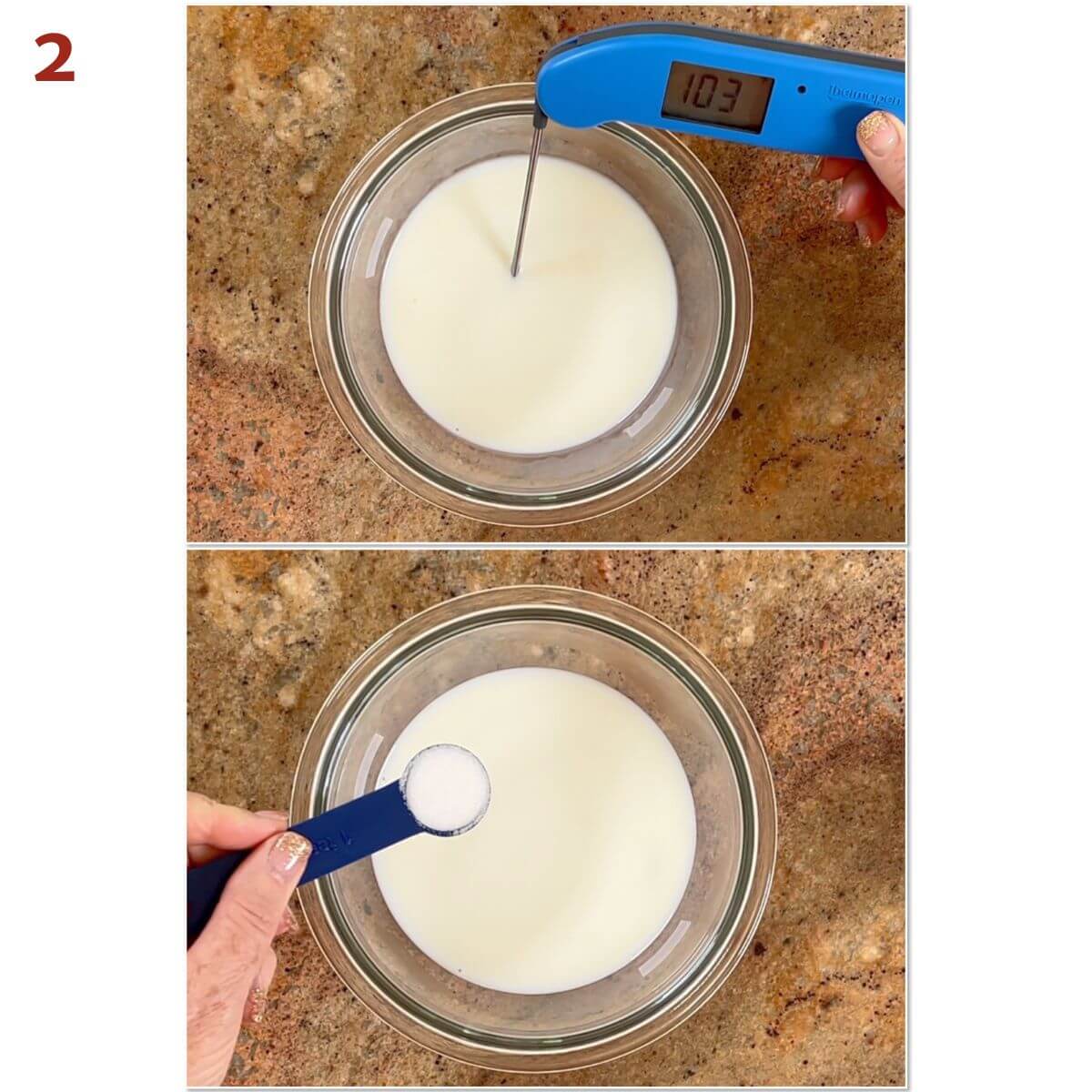
Set aside to proof for about 5 minutes or until bubbles form on the surface of the milk (photo 3).
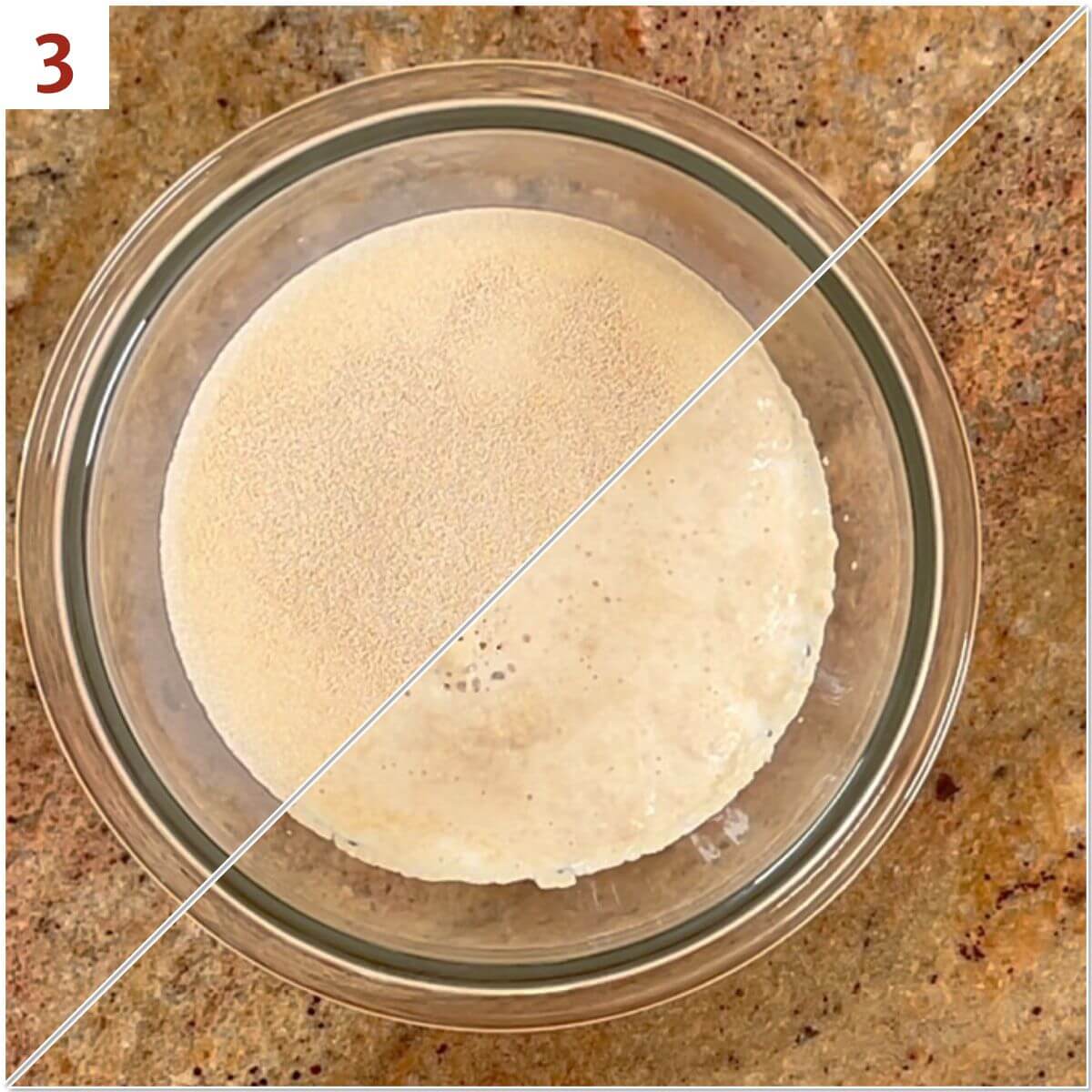
Step 3: Make the dough
Pour the milk into the bowl of a stand mixer fitted with the paddle attachment. Add the eggs, remaining sugar, and vanilla, then mix on Low speed for about 30 seconds. Add the flour and salt and mix on Low speed until a sticky dough forms. Add the butter, 1 tablespoon at a time, and mix in thoroughly before adding in another tablespoon (photo 4).
When all the butter is incorporated, switch to the dough hook and knead the dough on medium speed until a smooth and slightly sticky dough forms, about 5 to 10 minutes. Add more flour in 1 tablespoon increments as needed to make the dough the right consistency.
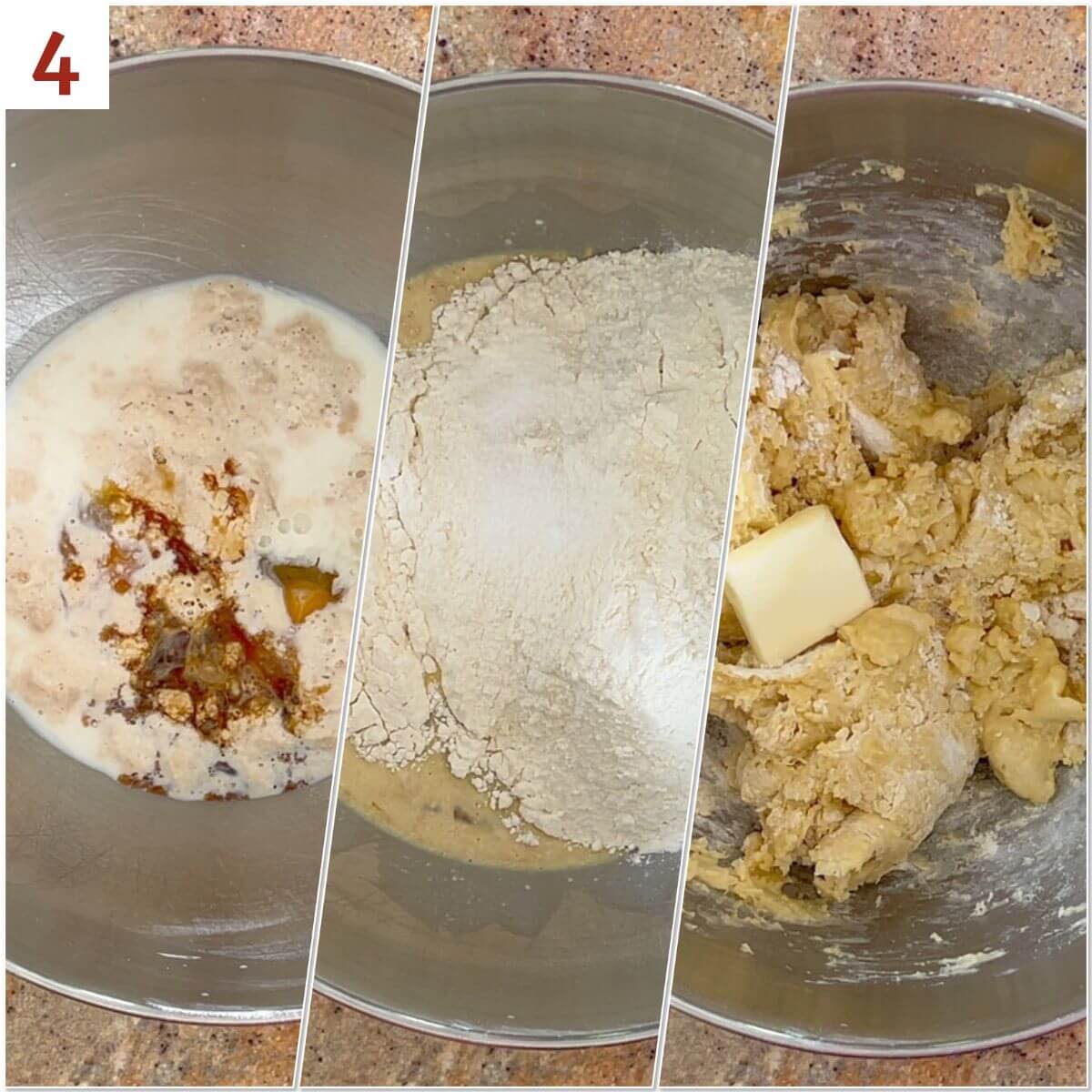
Spray a 2-quart dough rising bucket or a large bowl with canola oil spray and place the dough ball in smooth side down to wipe it with oil. Turn the dough with the gathered rough part of the dough down and the smooth surface of the ball facing up. Cover with the lid or plastic wrap and let it rise in a warm place for about 1 hour, or until the dough has doubled in size (photo 5). The inside of an unheated oven with the light on works well.
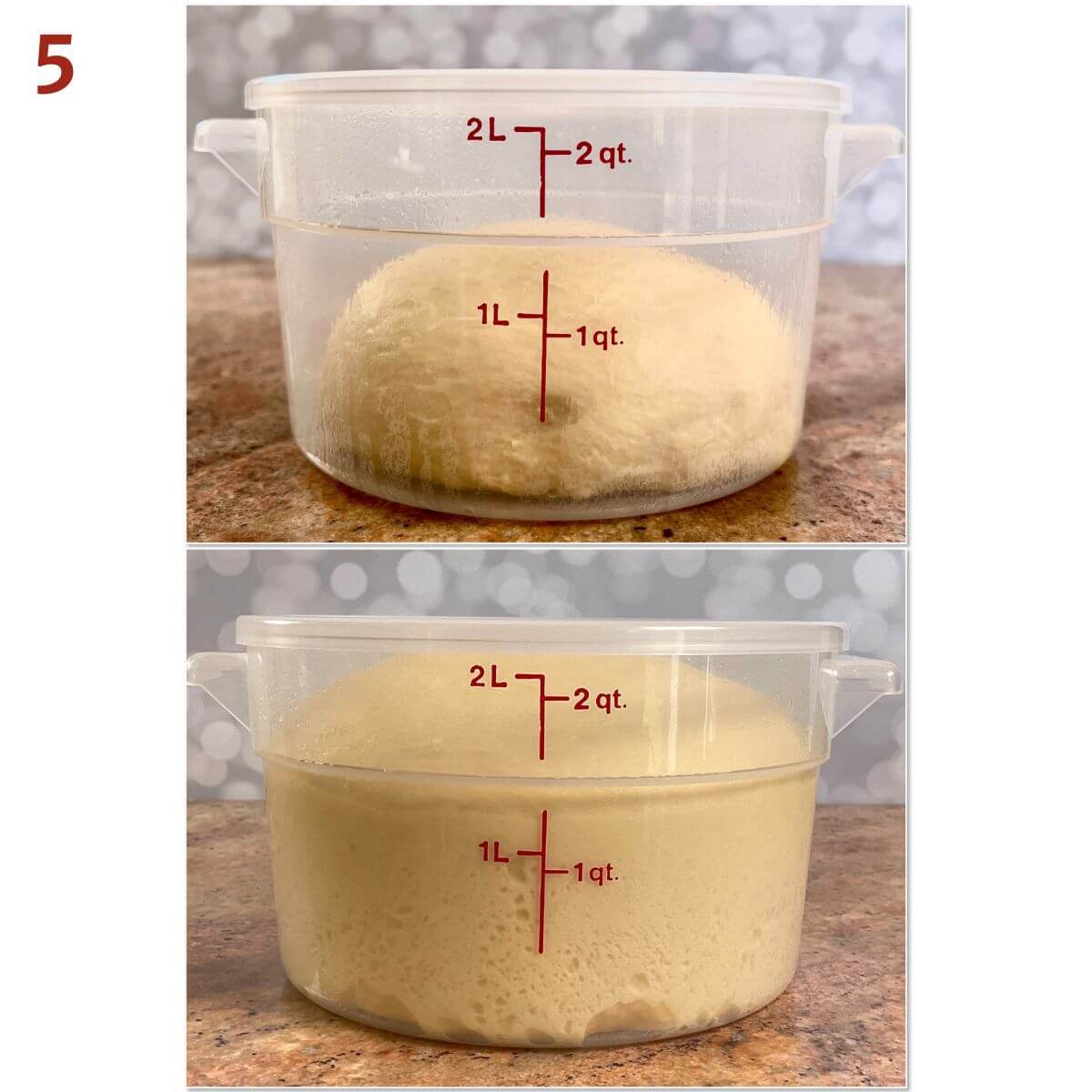
Step 4: Make the filling
While the dough is resting, bring the wine to boil over Medium heat and reduce to ½ cup, about 15 to 20 minutes (). Keep an eye on it so the wine doesn’t reduce too fast and burn. It will have a slightly thickened texture and will coat the back of a spoon, and will firm up upon chilling.
Pour into a small bowl and chill until ready to use.
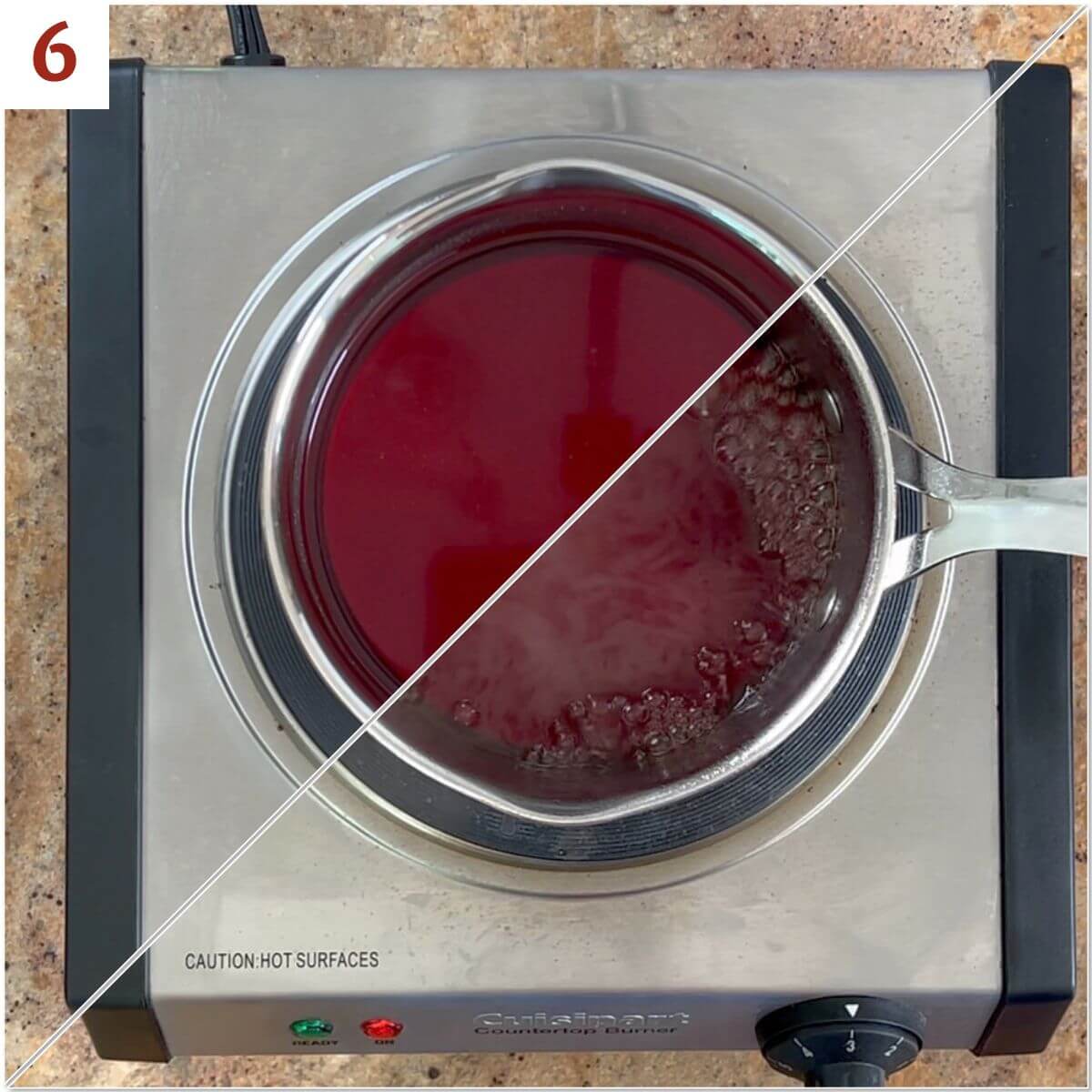
Step 5: Make the topping
Whisk together the brown sugar, cinnamon, and salt in a small bowl (photo 7).
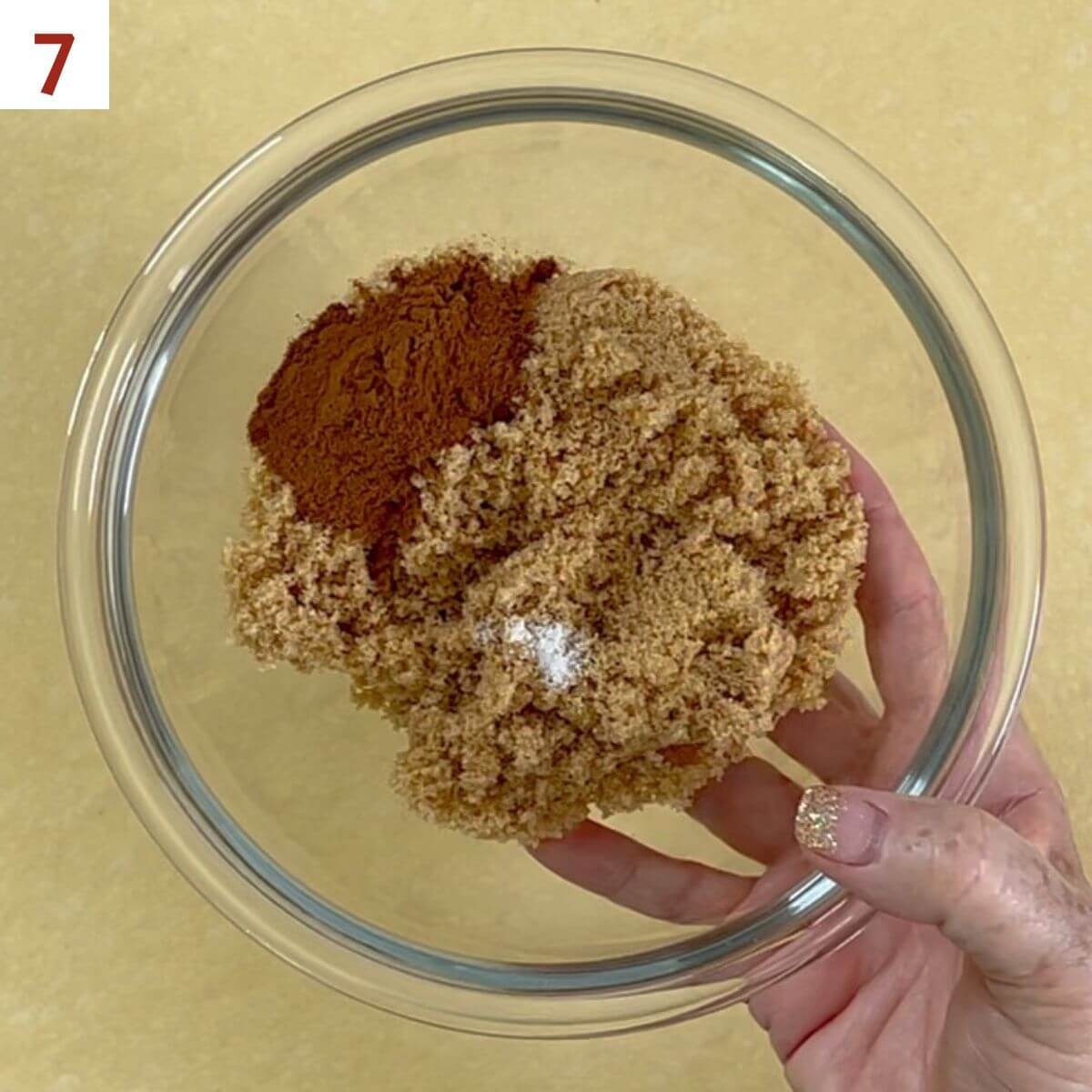
Step 6: Assemble the babka
Spray a standard loaf pan with baking spray and line the bottom and sides with parchment paper, leaving some of the paper overhanging the edges of the pan.
Once the dough has doubled, lightly dust a clean surface with flour and roll the dough out to a rectangle roughly 15- x 17-inches, with a long side facing you (photo 8).

Spread the jam over the surface of the dough using a large offset spatula, then drizzle some the cooled wine syrup and spread it over the jam (photo 9).
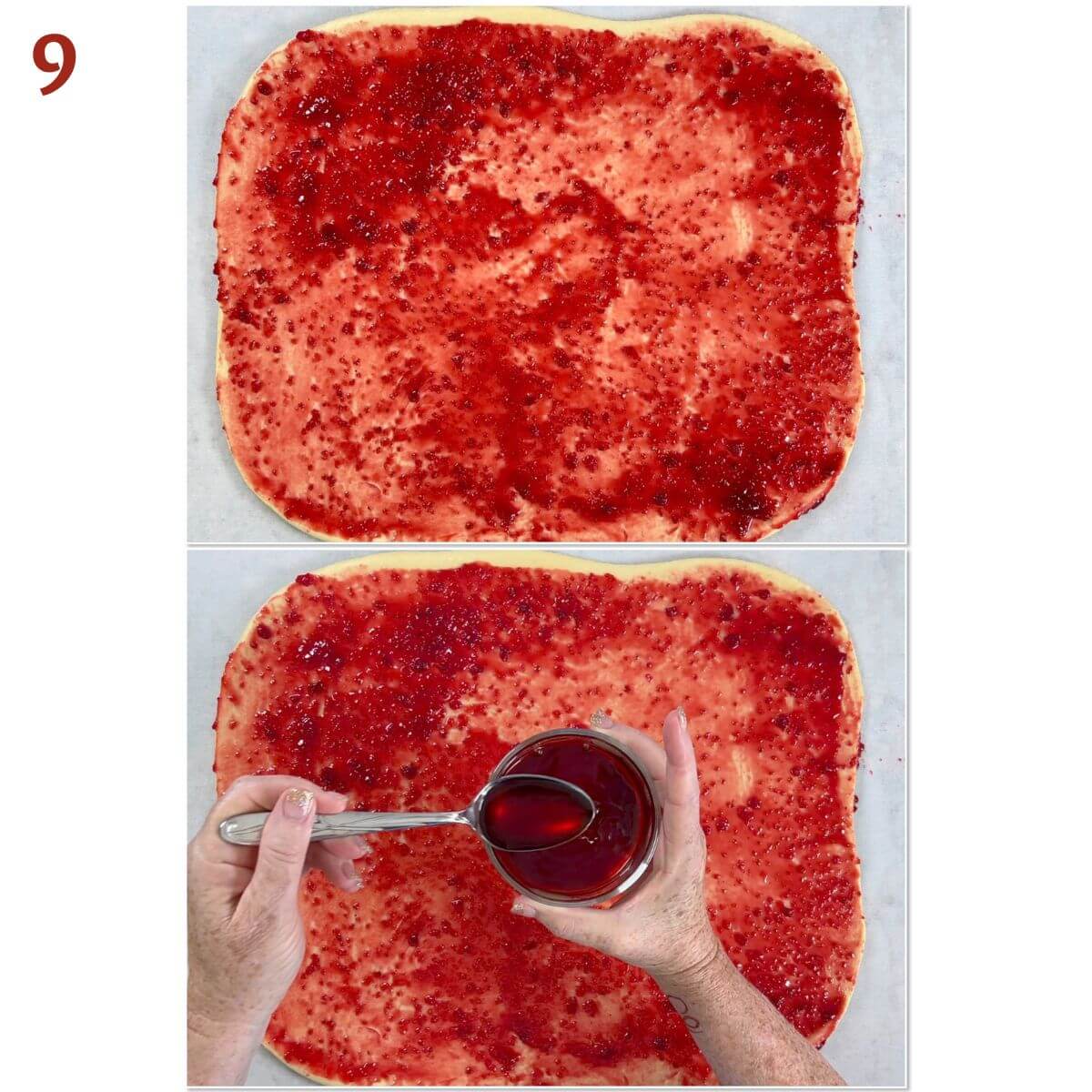
Sprinkle the brown sugar mixture to lightly cover the spread, leaving some to top the bread later. Finally, sprinkle reserved cranberries evenly over everything (photo 10).
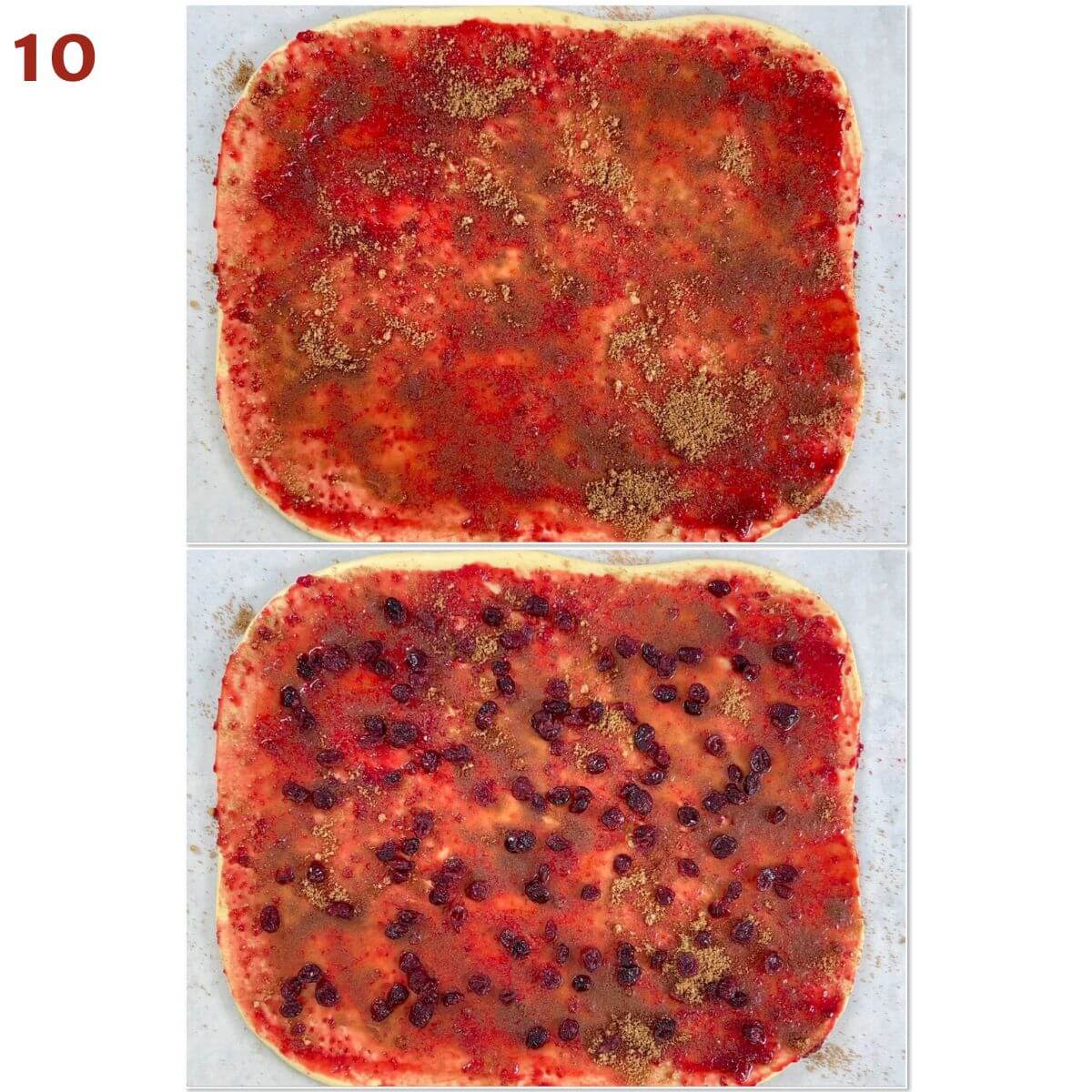
Tightly roll the dough up from the bottom, making a 17-inch rope. Slice the dough in half lengthwise with a bench scraper, making two 17-inch long pieces (photo 11). The dough might start to fall apart because of the cranberries.
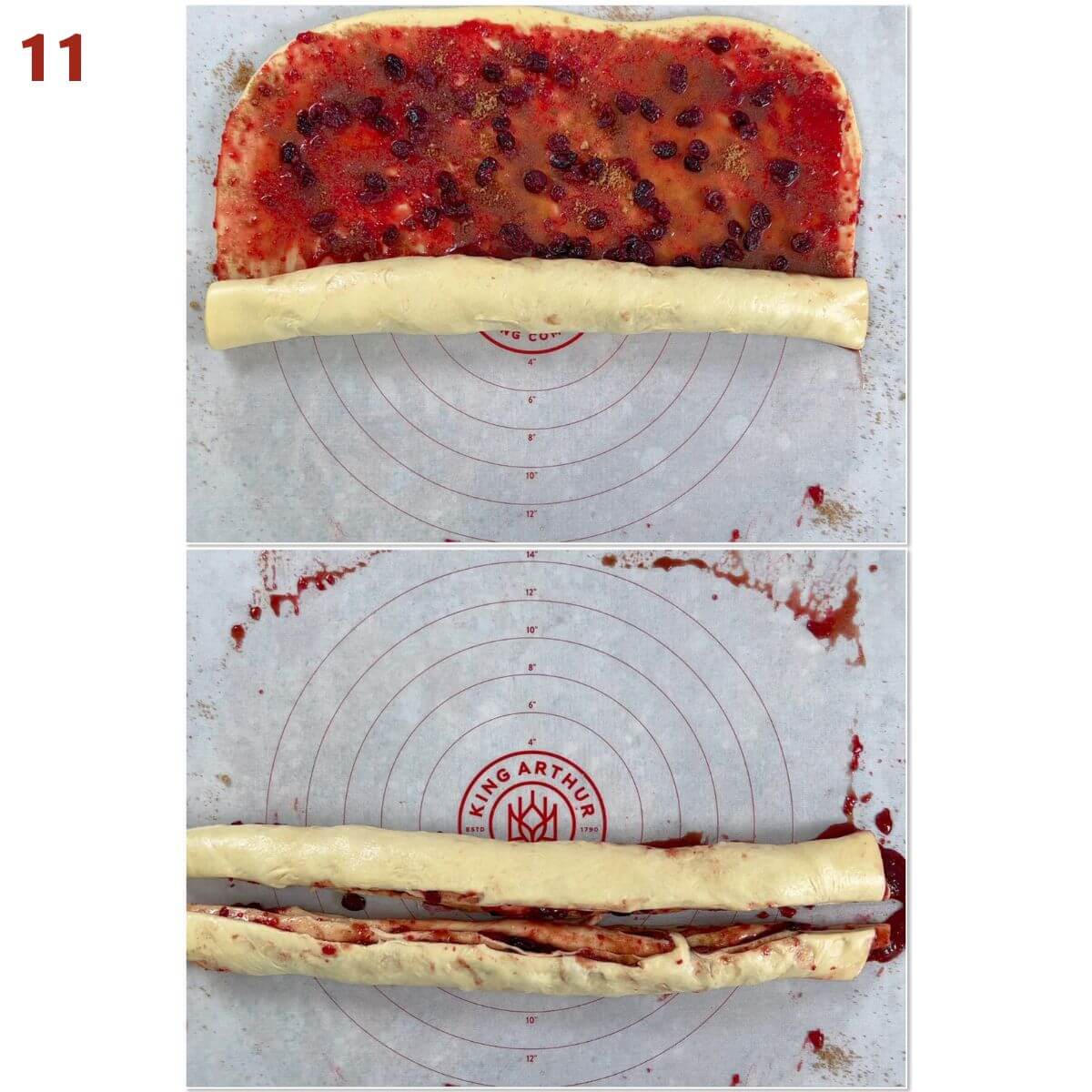
Twist each long piece individually (in the same direction) so the cranberries are trapped inside the dough, tucking in any that have fallen out. Finally, twist and wrap the two ropes of dough together, in the opposite direction from the way you twisted the individual ropes (photo 12).
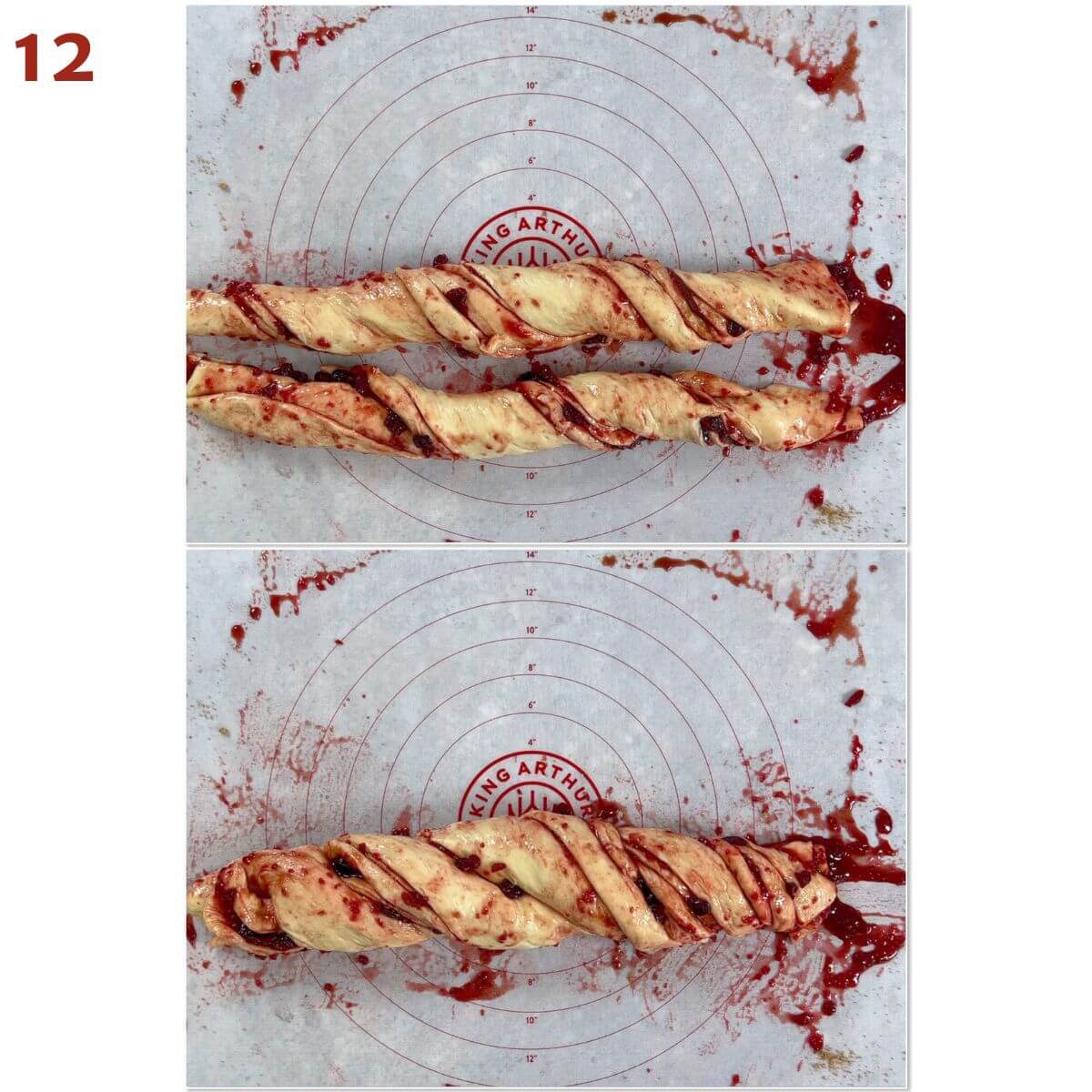
Squish the twisted dough together and transfer it to the prepared loaf pan, tucking in any stray cranberries and dough (photo 13).
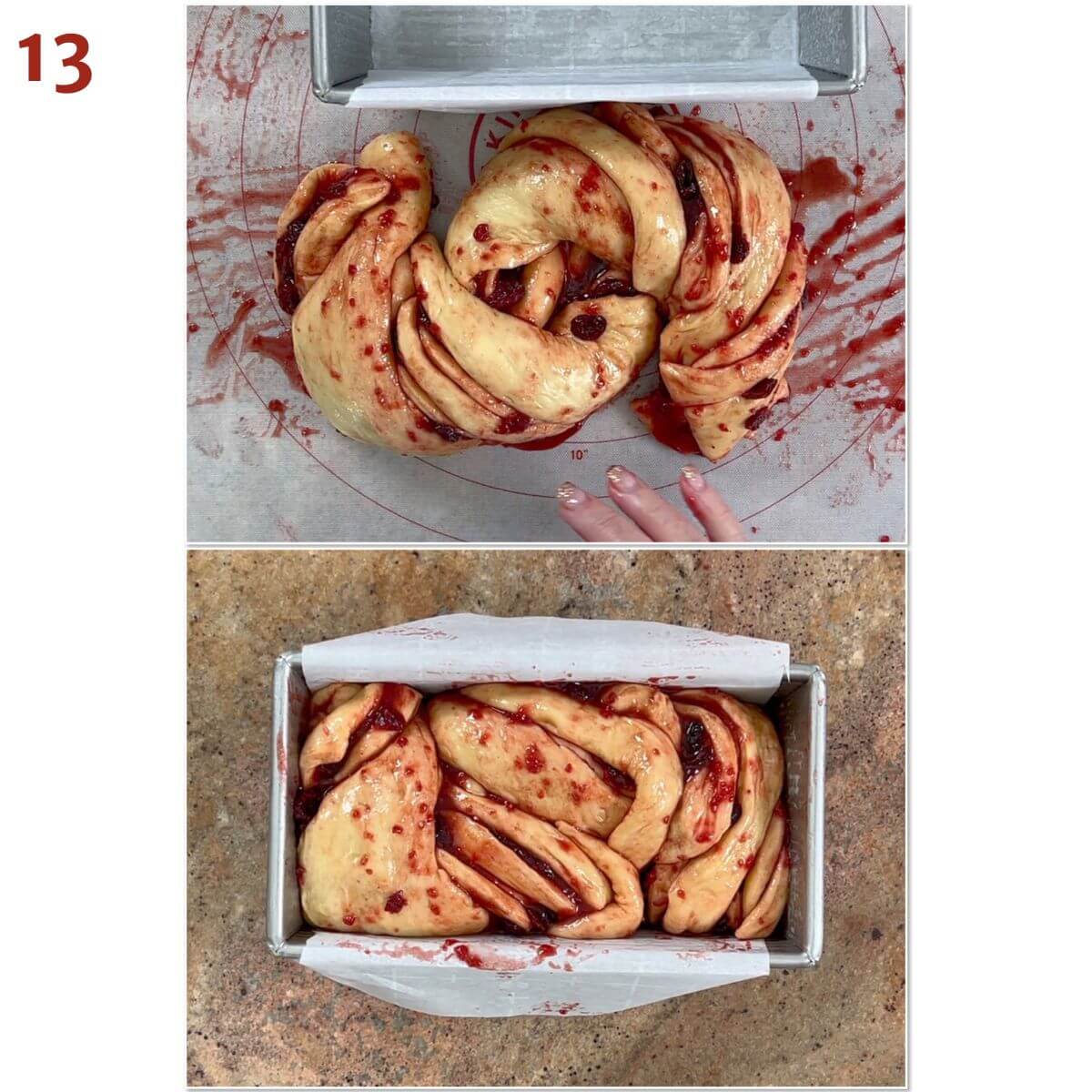
Sprinkle the remaining brown sugar mixture over the top of the dough. Cover with a piece of plastic wrap, and let rise for 30 minutes (photo 14).
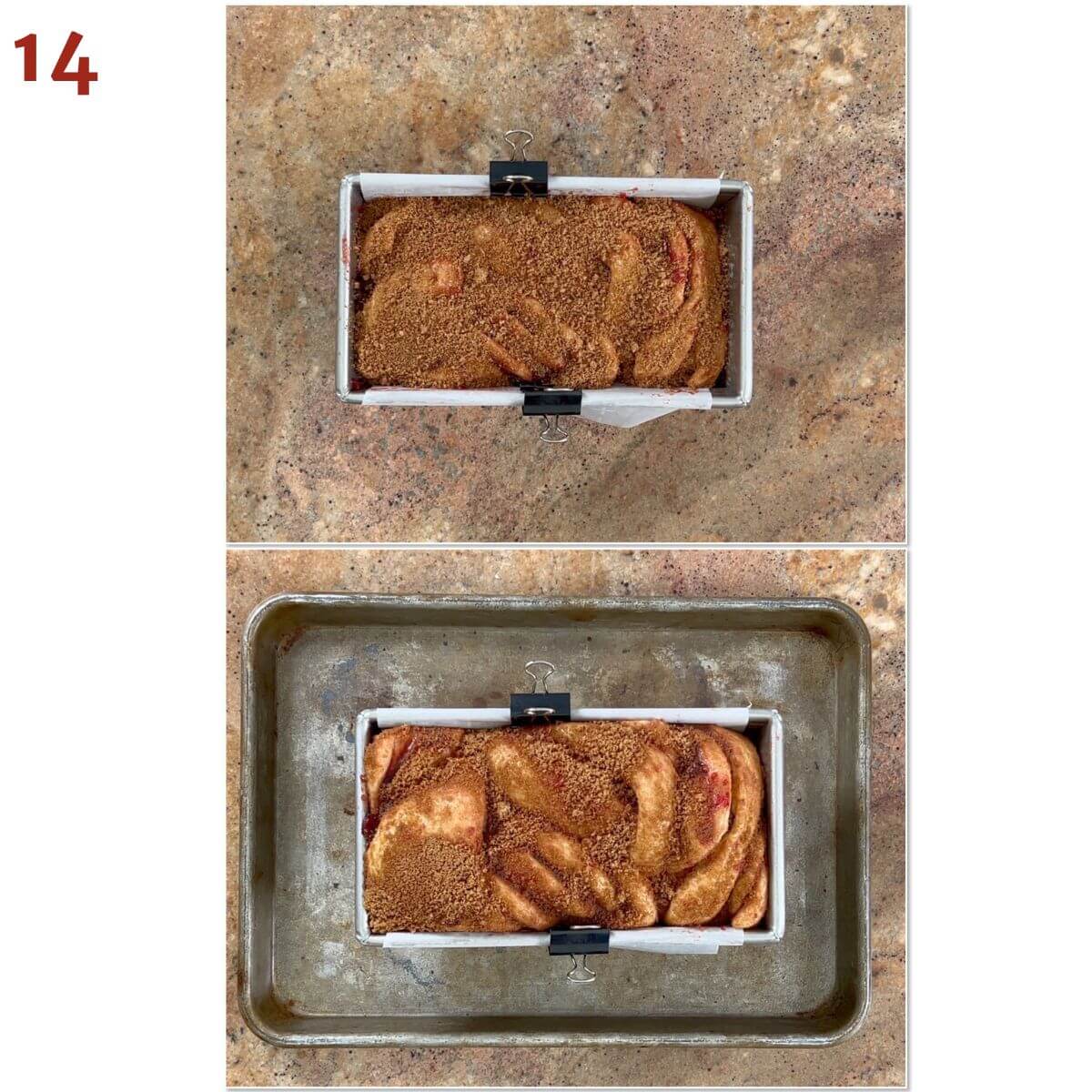
Step 7: Bake the babka
While the babka loaf is rising, preheat the oven to 350°F. When the dough is ready, place the loaf pan on a quarter sheet baking pan (to catch any drips).
Bake the bread for 45 minutes. Reduce the oven temperature to 325°F and continue to bake until the top of the babka is deep brown, about 15 minutes more (photo 15).
Let the babka cool in the pan for 15 minutes, then use the parchment paper to lift it out of the pan and transfer it to a wire cooling rack. Let it cool to room temperature.
When ready to serve, warm the babka or serve at room temperature, sliced thickly. If desired, drizzle any leftover wine syrup on top. Enjoy!

Storage and make-ahead instructions
Storage instructions: Babka can be store for 24 hours in an airtight container at room temperature. It can also be frozen, well wrapped in plastic wrap in a ziplock bag, for up to 2 months. Thaw at room temperature for 2 hours or overnight in the refrigerator.
Make-ahead instructions: The cranberries can be soaked and the wine syrup can be made several days ahead. Store tightly covered in the refrigerator until ready to use.
Questions asked and answered
Here are some questions you might have...
Babka, a sweet rolled and twisted bread, has its roots in the Eastern European Jewish community who brought it with them as they migrated to the New World.
At its core, babka is a brioche bread recipe that's spread with some sort of filling before being rolled up, cinnamon roll-style. It’s then split, twisted, and shoved into a loaf pan to bake into dreamy dessert-bread.
Actually, it isn't far off from a basic challah recipe also, just subbing in milk and butter for the water and oil. Given babka's origin story, that's not surprising because Jewish bakers make braided challah for the weekly sabbath meal and for holiday observances like Rosh Hashanah (the Jewish New Year).
Babka is also versatile, and with different filling options (Apricot! Chocolate! Apples & Honey!), it can be served at almost any meal.
This bread takes a long time to bake, and the top will get dark brown long before the center has fully baked. Remember that yeast is pushing against a lot of fat and filling, and the oven heat will have a hard time penetrating all that. Let the babka bake at least an hour or so. The best way to check that the center is done is with a digital thermometer reading at least 190°F.
Instant yeast doesn't need to be rehydrated (or "proved"), and can be added directly to the bread recipe's dry ingredients.
Active yeast needs to be rehydrated in a warm liquid before using (or have very warm liquid, between 120 to 130°F, in the recipe), and will take about 15 to 20 minutes longer to rise than instant yeast.
Whether you choose to proof your yeast is up to you.
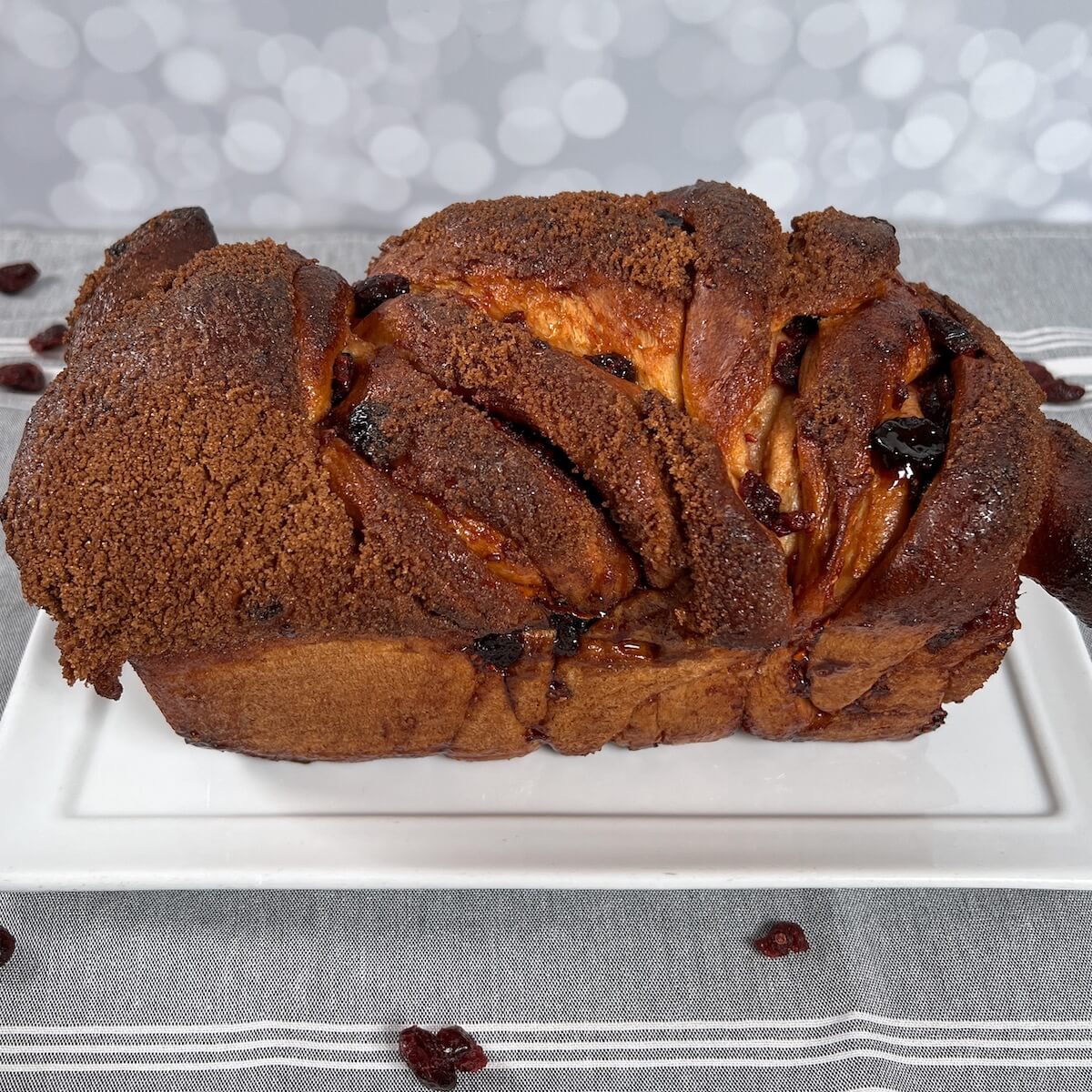
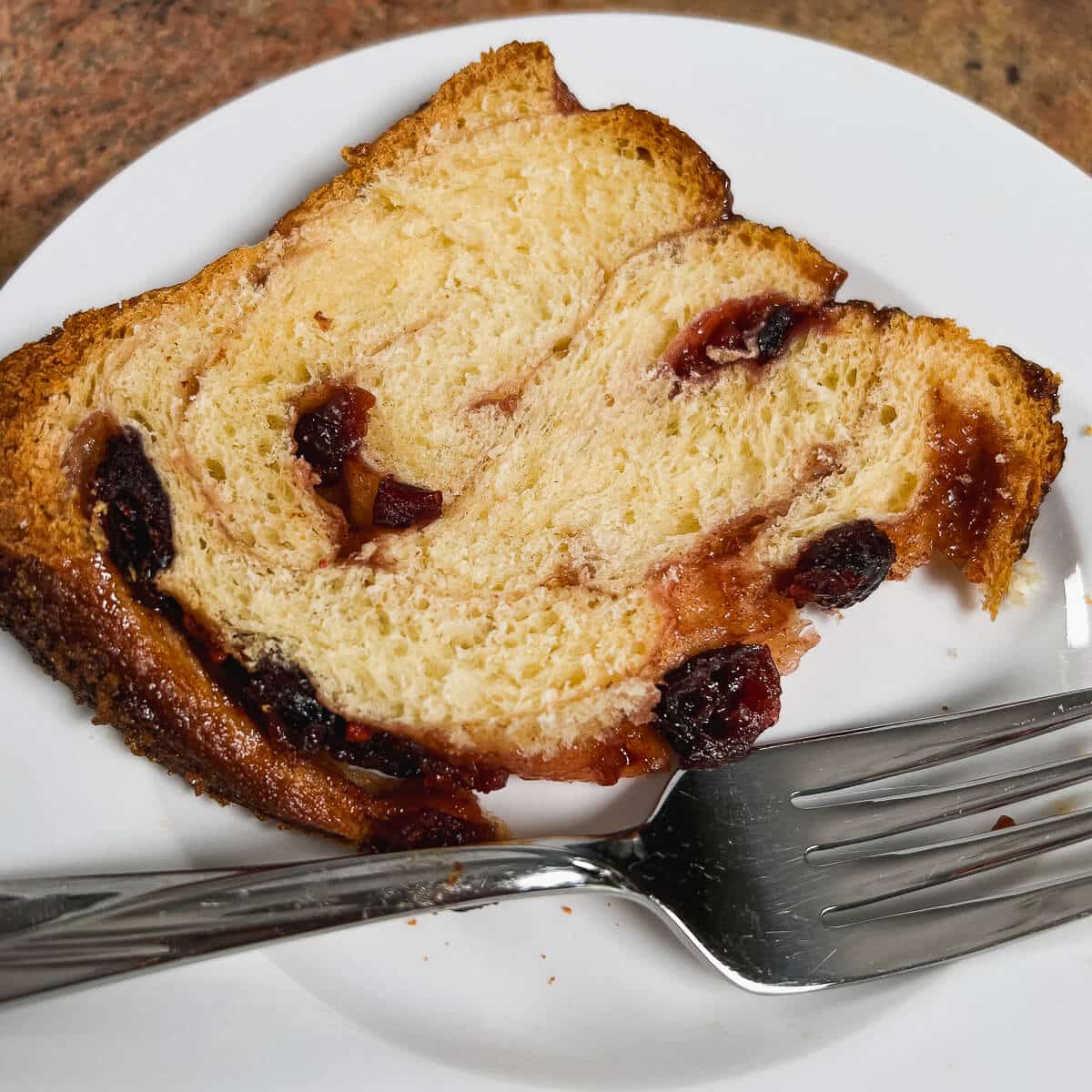
More shaped bread recipes to try
Recipe

Cranberry Cinnamon Swirl Bread (Babka)
Equipment
Ingredients
For the dough
- ¾ cup milk, warmed between 100°F to 110°F
- ¼ cup granulated sugar, divided
- 2¼ teaspoons instant yeast, or Active Dry yeast, see Recipe Notes
- 2 large eggs, at room temperature
- 1 teaspoon pure vanilla extract
- 3½ cups all-purpose flour, plus more as needed
- ¾ teaspoons kosher salt
- 4 tablespoons butter
For the filling
- 1½ cups cranberry wine, or another semi-sweet fruit wine, see Recipe Notes
- ½ cup dried cranberries, sweetened, see Recipe Notes
- ½ cup raspberry jam, see Recipe Notes
For the topping
- 2 teaspoons ground cinnamon
- ½ cup brown sugar
- ⅛ teaspoon kosher salt
Instructions
- Soak the cranberries: Place the wine in a medium microwave-safe bowl and heat for 1 minute on High. Add in the dried cranberries and soak in the warmed wine for at least an hour.
- Make the dough: Heat the milk in the microwave for 30 to 60 seconds until it’s warm to the touch, about 100 °F to 110 °F as read on a digital thermometer. Stir in 1 teaspoon of sugar, then sprinkle the yeast over the milk. Set aside to proof for about 5 minutes or until bubbles form on the surface of the milk.
- Pour the milk into the bowl of a stand mixer fitted with the paddle attachment. Add the eggs, remaining sugar, and vanilla, then mix on Low speed for about 30 seconds. Add the flour and salt and mix on Low speed until a sticky dough forms. Add the butter, 1 tablespoon at a time, and mix in thoroughly before adding in another tablespoon.
- When all the butter is incorporated, switch to the dough hook and knead the dough on medium speed until a smooth and slightly sticky dough forms, about 5 to 10 minutes. Add more flour in 1 tablespoon increments as needed to make the dough the right consistency. Gather the dough into a ball, stretching it so the top of the ball is smooth.
- Spray a 2-quart dough rising bucket or a large bowl with canola oil spray and place the dough ball in smooth side down to wipe it with oil. Turn the dough with the gathered rough part of the dough down and the smooth surface of the ball facing up. Cover with the lid or plastic wrap and let it rise in a warm place for about 1 hour, or until the dough has doubled in size. The inside of an unheated oven with the light on works well.
- Make the filling: Strain the wine into a small saucepan, and set the cranberries aside. Bring the wine to boil over Medium heat and reduce to ½ cup (about 15 to 20 minutes). Keep an eye on it so the wine doesn’t reduce too fast and burn. It will have a slightly thickened texture and will coat the back of a spoon (it will firm up upon chilling). Pour into a small bowl and chill until ready to use.
- Make the topping: Whisk together the brown sugar, cinnamon, and salt in a small bowl.
- Assemble the swirl bread: Spray a standard loaf pan with baking spray and line the bottom and sides with parchment paper, leaving some of the paper overhanging the edges of the pan.
- Once the dough has doubled, lightly dust a clean surface with flour and roll the dough out to a rectangle roughly 15- x 17-inches, with a long side facing you. Spread the jam over the surface of the dough using a large offset spatula, then drizzle some the cooled wine syrup and spread it over the jam. Sprinkle the brown sugar mixture to lightly cover the spread (leaving some to top the bread later). Finally, sprinkle reserved cranberries evenly over everything.
- Tightly roll the dough up from the bottom, making a 17-inch rope. Slice the dough in half lengthwise with a bench scraper, making two 17-inch long pieces. The dough might start to fall apart because of the cranberries. Twist each long piece individually (in the same direction) so the cranberries are trapped inside the dough, tucking in any that have fallen out. Finally, twist and wrap the two ropes of dough together (in the opposite direction from the way you twisted the individual ropes).
- Squish the twisted dough together and transfer it to the prepared loaf pan, tucking in any stray cranberries and dough. Sprinkle the remaining brown sugar mixture over the top of the dough. Cover with a piece of plastic wrap, and let rise for 30 minutes.
- While the babka loaf is resting, preheat the oven to 350 °F. When it's ready, place the loaf pan on a quarter sheet baking pan (to catch any drips).
- Bake the bread for 45 minutes, then reduce the oven temperature to 325 °F. Continue to bake until the top of the babka is deep brown, about 15 minutes more, and the loaf sounds hollow when tapped on the top. The babka will be fully baked when the center reads at least 190 °F.
- Let the babka cool in the pan for 15 minutes, then use the parchment paper to lift it out of the pan and transfer it to a wire cooling rack. Let it cool to room temperature.
- When ready to serve, warm the babka or serve at room temperature, sliced thickly. If desired, drizzle any leftover wine syrup on top. Enjoy!
- Storage instructions: Babka can be store for 24 hours in an airtight container at room temperature. It can also be frozen, well wrapped in plastic wrap in a ziplock bag, for up to 2 months. Thaw at room temperature for 2 hours or overnight in the refrigerator.
- Make-ahead instructions: The cranberries can be soaked and the wine syrup can be made several days ahead. Store tightly covered in the refrigerator until ready to use.
Notes
- Orange juice, dried apricots, and apricot jam
- Blueberry wine, dried blueberries, and blueberry jam
- Apple cider, dried apples, apple butter

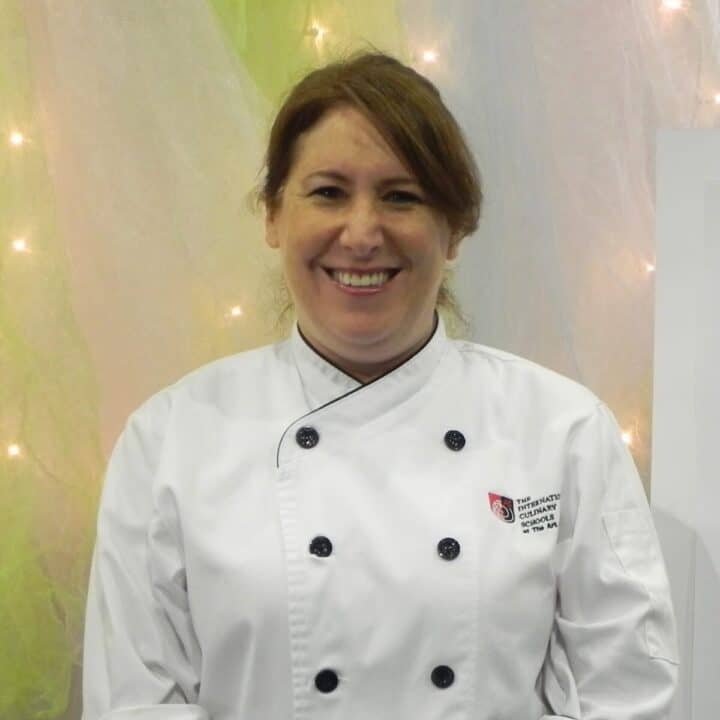
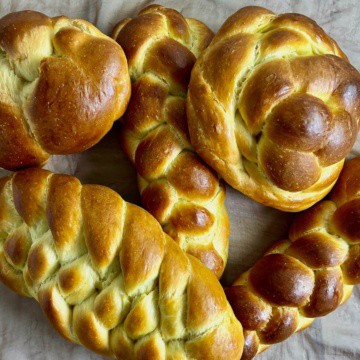
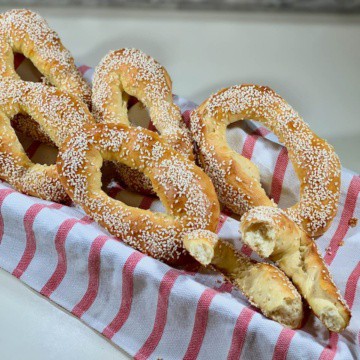
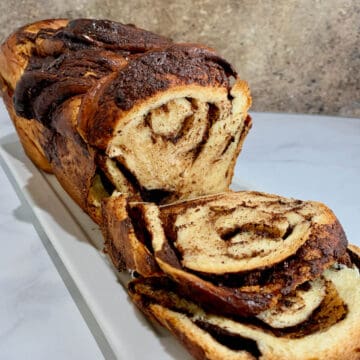

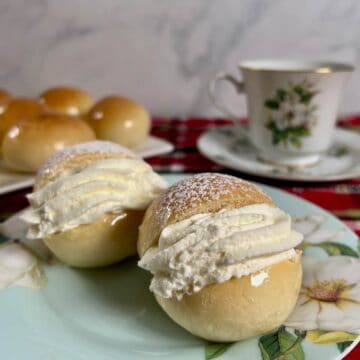
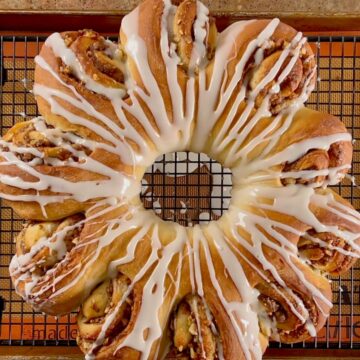
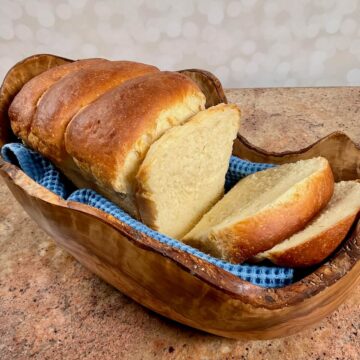
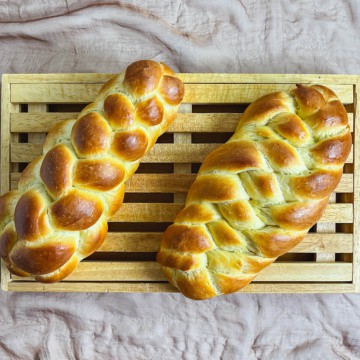
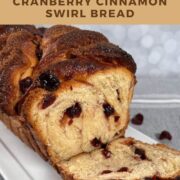
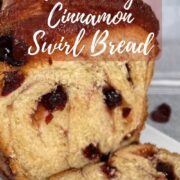
Let's Talk